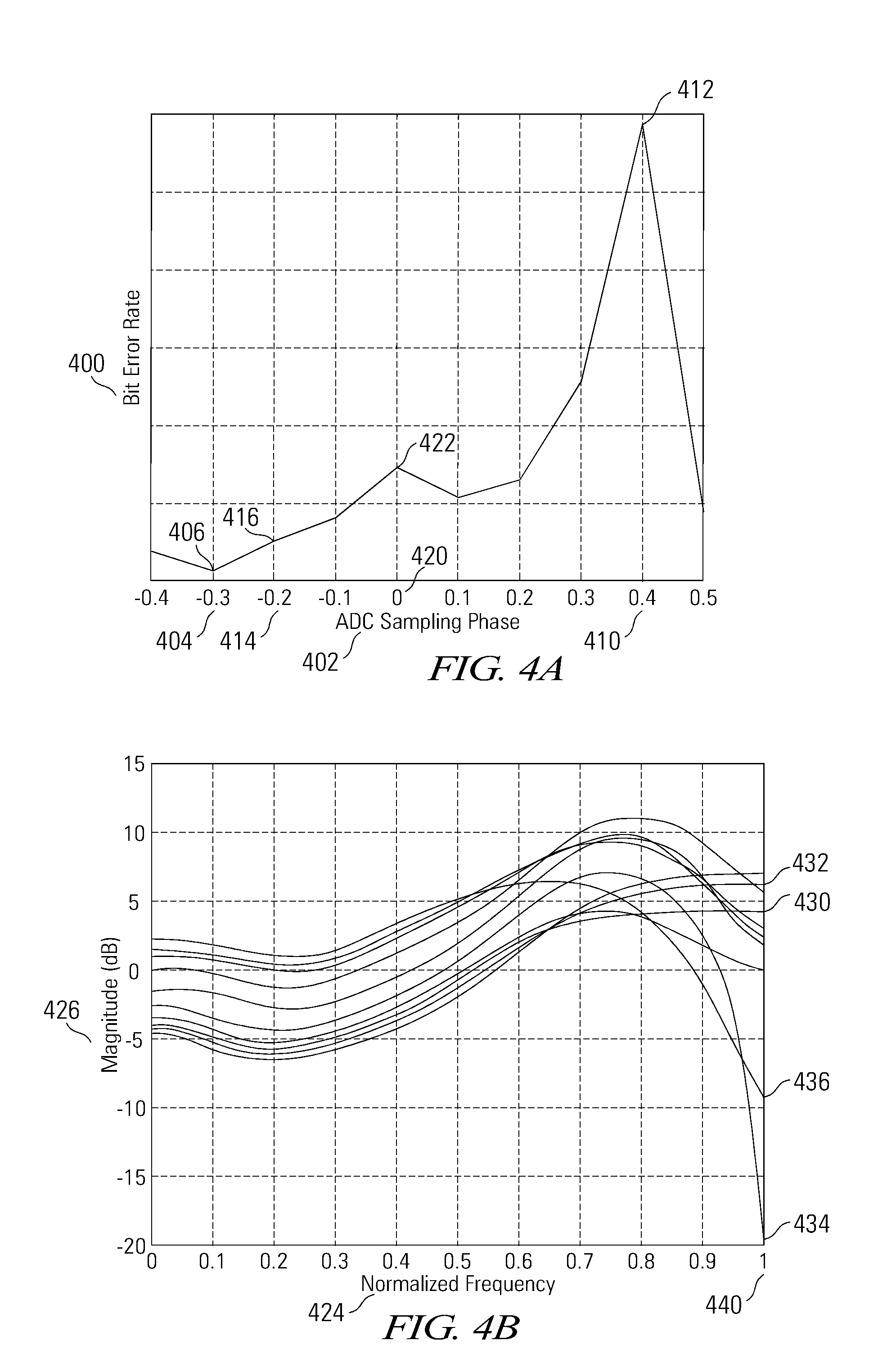Nyquist Constrained Digital Finite Impulse Response Filter
a digital finite impulse and filter technology, applied in the field of nyquist constrained can solve the problems of time-consuming and complicated meeting of other objectives, and achieve the effect of frequency response sensitivity of the digital finite impulse response filter to the variable sampling phas
- Summary
- Abstract
- Description
- Claims
- Application Information
AI Technical Summary
Benefits of technology
Problems solved by technology
Method used
Image
Examples
Embodiment Construction
[0020]Various embodiments of the present invention are related to apparatuses and methods for filtering a digital signal, and more particularly to a Nyquist constrained DFIR filter. Various embodiments of the present invention constrain the magnitude of the Nyquist response of a DFIR filter to remain within a Nyquist constraint range. When the magnitude of the Nyquist response remains within the range, the sensitivity of the DFIR filter to an upstream ADC sampling phase is greatly reduced. The Nyquist response and the magnitude of the Nyquist response of the DFIR filter at time k are represented by S and by |S|, respectively, and are defined herein by Equations 1 and 2:
S=∑i(f2i,k-f2i+1,k)Equation1S=∑i(f2i,k-f2i+1,k)Equation2
[0021]where S is the sum of the even tap weights minus the odd tap weights and |S| is the absolute value of S, where f2i,k represents the even tap weights (e.g., 112, 116) and f2i+1,k represents the odd tap weights (e.g., 114, 120). The tap weights may originally...
PUM
 Login to View More
Login to View More Abstract
Description
Claims
Application Information
 Login to View More
Login to View More - R&D
- Intellectual Property
- Life Sciences
- Materials
- Tech Scout
- Unparalleled Data Quality
- Higher Quality Content
- 60% Fewer Hallucinations
Browse by: Latest US Patents, China's latest patents, Technical Efficacy Thesaurus, Application Domain, Technology Topic, Popular Technical Reports.
© 2025 PatSnap. All rights reserved.Legal|Privacy policy|Modern Slavery Act Transparency Statement|Sitemap|About US| Contact US: help@patsnap.com



